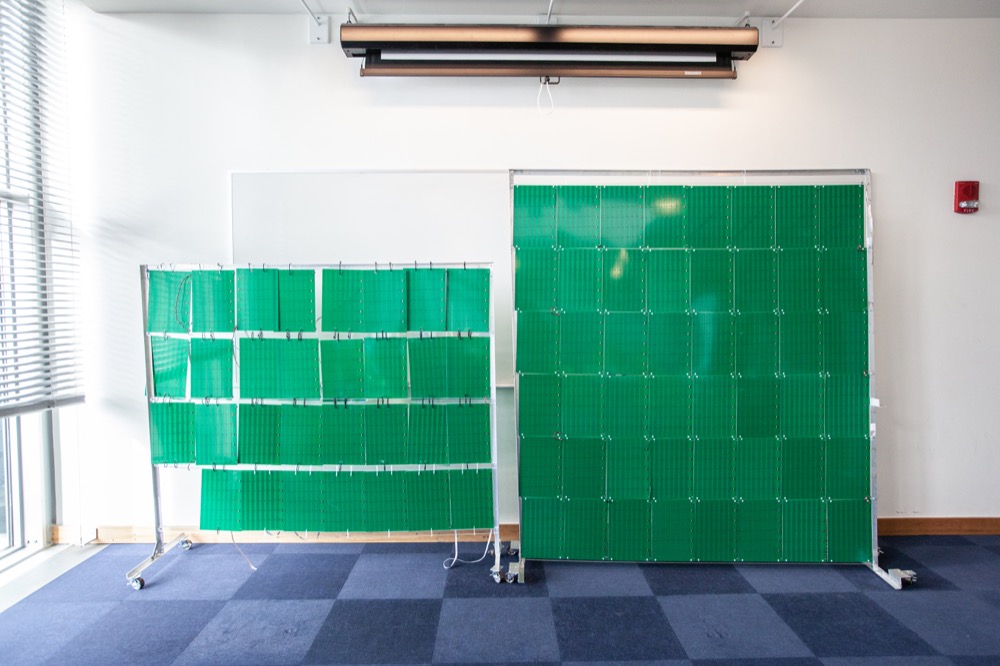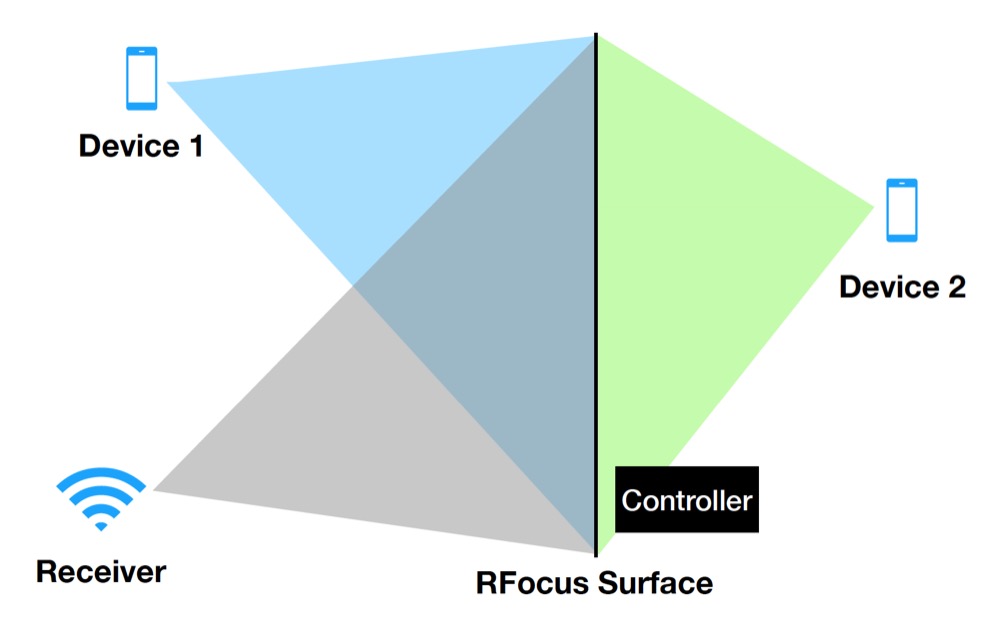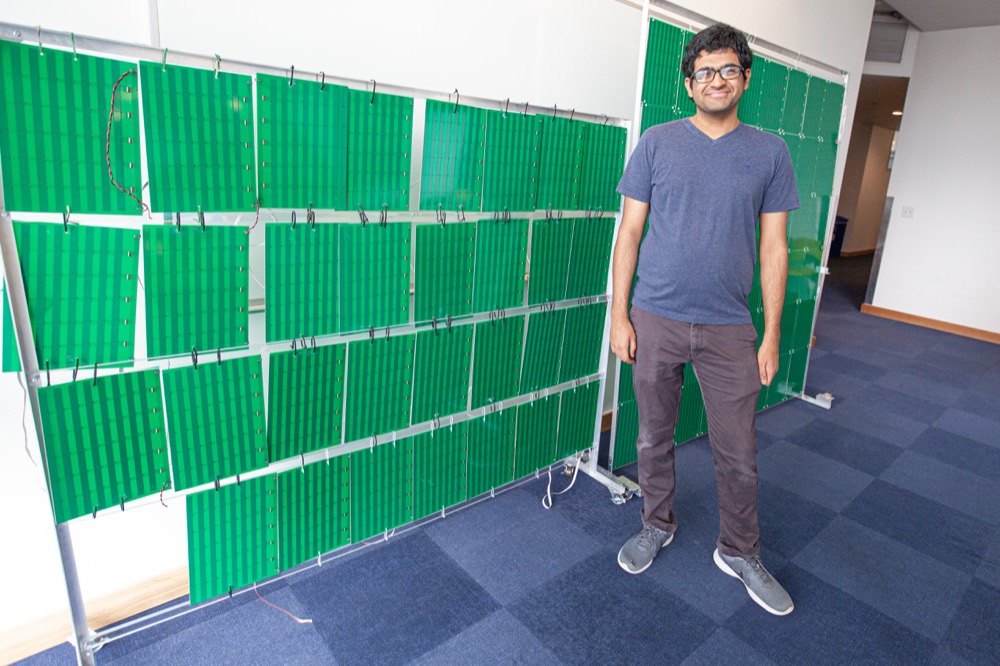
The MIT research team has released Smart Surface, RFocus, which increases the strength of wireless communication signals such as Wi-Fi and cellular networks by an average of 10 times.
The radio waves hitting the wall are reflected by a small RF switch installed, or modified like a lens to increase the communication speed and range without increasing the transmission power and number of antennas. In short, it is a beamforming soft control antenna on the path.
Wireless communication devices that require high speed, wide communication range, and low power consumption from mobile phone base stations to smartphones or routers to IoT devices use beamforming technology to increase directivity using multiple antennas. However, in principle, since the size of the antenna itself is determined according to the frequency band that requires multiple antennas, it is difficult to mount an IoT sensor that requires both miniaturization and low power, and as a result, it is limited in communication speed, range, and driving time.

The al-Focus announced by the MIT research team is the idea that a beamforming antenna function is provided in the path environment to which radio waves reach itself without relying on both ends of transmission and reception. Specifically, a specific switch is controlled to reflect or transmit radio waves using an external controller on a sheet of small elements that perform a simple RF switch function. It doesn’t send an amplified signal like a so-called Wi-Fi amplifier. No power is used except for controller operation and switch relocation.
All that the controller needs is the strength of the radio wave from nearby receivers. There is no need to acquire three-dimensional location information of each device. Through its own algorithm, the RF switch group on the wall is software-controlled and transformed into an optimal beamforming antenna. It focuses on specific equipment through a function such as a mirror or a lens against the impinging radio waves.
Since the configuration of the RF switch can be changed dynamically in about 1ms, it also supports multiple communication and mobile terminals. When communication is needed, it can be controlled to increase overall performance by switching from device to device. In a proof-of-concept experiment, AlFocus is said to have improved signal strength by an average of 10.5 times and channel capacity by 2.1 times.

Of course, since it is an antenna, it is not necessary to al-focus the entire wall of the building. In the experiment, a prototype was used in which a sheet in the form of a self-made board laid on it was connected with a line, but in principle, the structure and elements are also a simple structure like a passive RFID tag. It is said that it can be put into practical use at low cost. Any place where wireless communication is used indoors is supposed to be used. Among them, applications can be considered in environments that require efficient communication of IoT sensors in small and large quantities such as factories. Of course, even in facilities where radio waves do not reach. If it becomes a product that can be installed by an individual, it will provide an opportunity to amplify the environment to which radio waves reach at home (although there was still Wi-Fi). Related information can be found here .


















Add comment